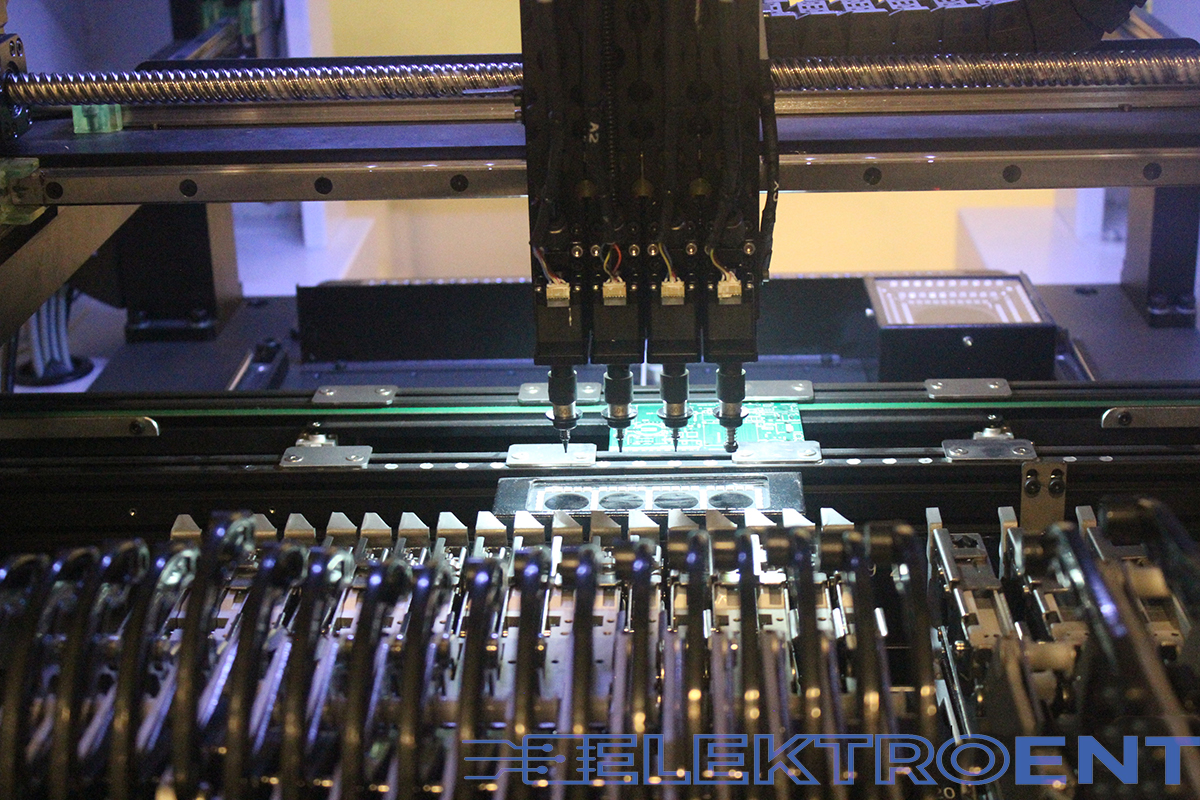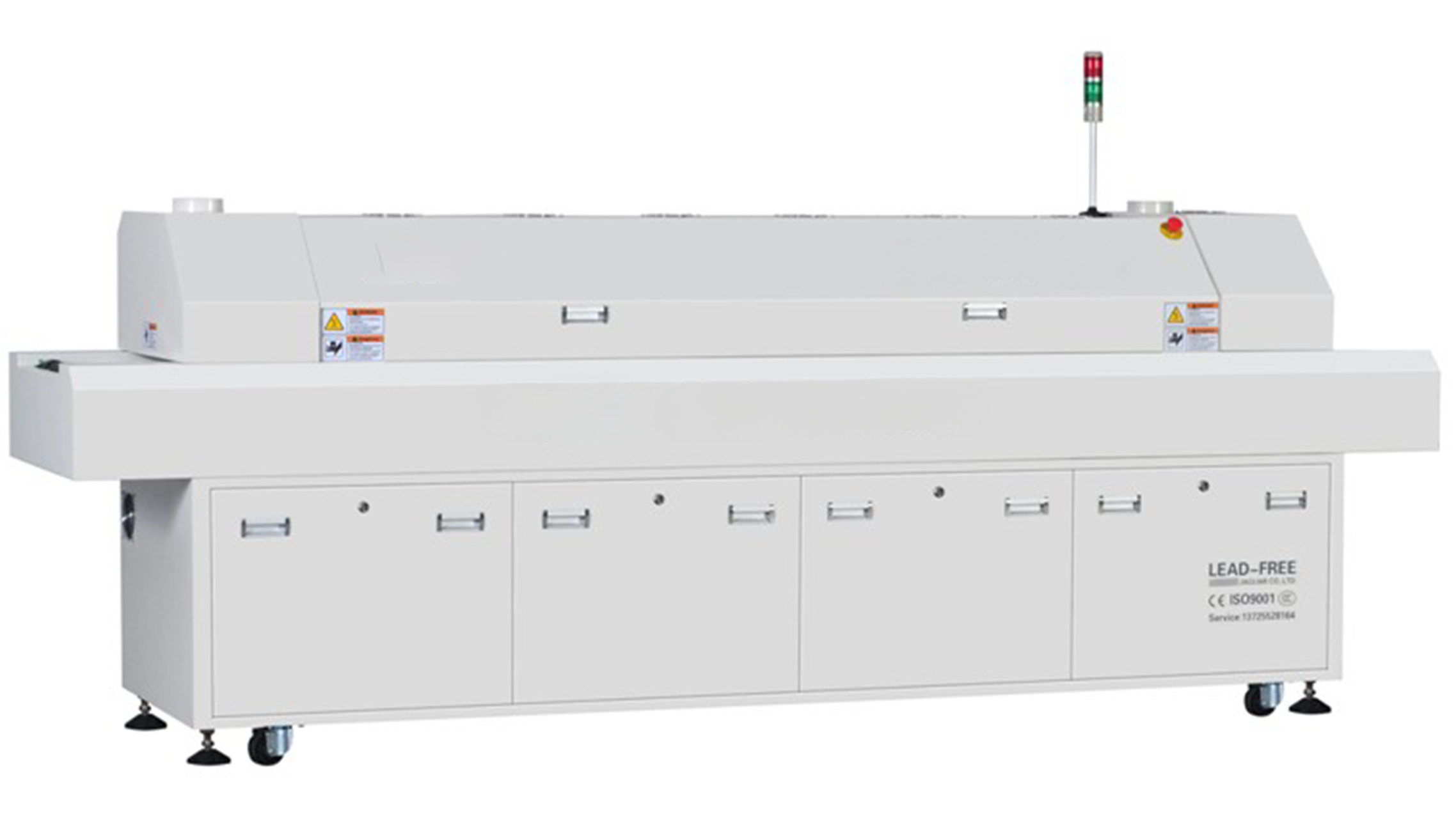

Our SMD (Surface Mount Device) & THT (Through-Hole Technology) assembly line complies with the technical specifications for assembling all types of electronic boards according to IPC-A-610 and ISO 9001 standards. The process starts with our manual screen printing machine for SMD and THT assembly. This machine applies solder paste onto the PCB (Printed Circuit Board). Using specially designed stencils for each PCB, the appropriate amount of solder paste is applied, checked, and then transferred to the assembly process.
With our experienced staff in infrastructure and production techniques, your cards can be designed and produced without any problem and at high quality standards, without any quantity limit.
We have two separate professional lines for SMT (Surface Mount Technology) assembly, including automatic machines. Our first line features Juki's high-speed intelligent modular chip mount SMT assembly machine, which leads its class with speeds up to 29,000 CPH (Components Per Hour). The second line is equipped with a machine that has 50 feeder trays (feeders) and 4 nozzles, capable of placing components on PCBs at appropriate coordinates, angles, and heights. This machine operates at a speed of 10,000 CPH in accordance with IPC standards.


Our fully automatic SMD & THT Assembly Line can work with a wide range of components up to 201, 402, 603, 805, 1206, 1210 and TQFP240. This system is equipped with 4 high-resolution inspection cameras, ensuring component assembly accuracy of up to 0.01 millimeters, ensuring minimum error rates during assembly. Following assembly and soldering, our PCB boards are meticulously inspected using the Omron RNS II Optical Inspection machine. This inspection process helps detect and correct problems such as cold solder joints, discoloration, post-assembly oxidation and cracking.
After SMD & THT assembly process, PCB boards are transferred to a special oven via conveyor system. This oven offers a wide temperature range from room temperature to 300°C, providing ±1°C temperature accuracy and ±2°C PCB temperature deviation. The oven has a total of 12 heating zones, 6 upper and 6 lower, so that PCB boards are baked to the required temperature profile. This process optimizes soldering quality, ensuring high standards of results.
